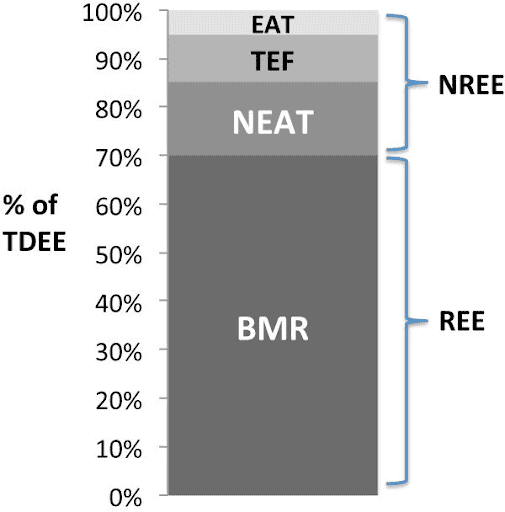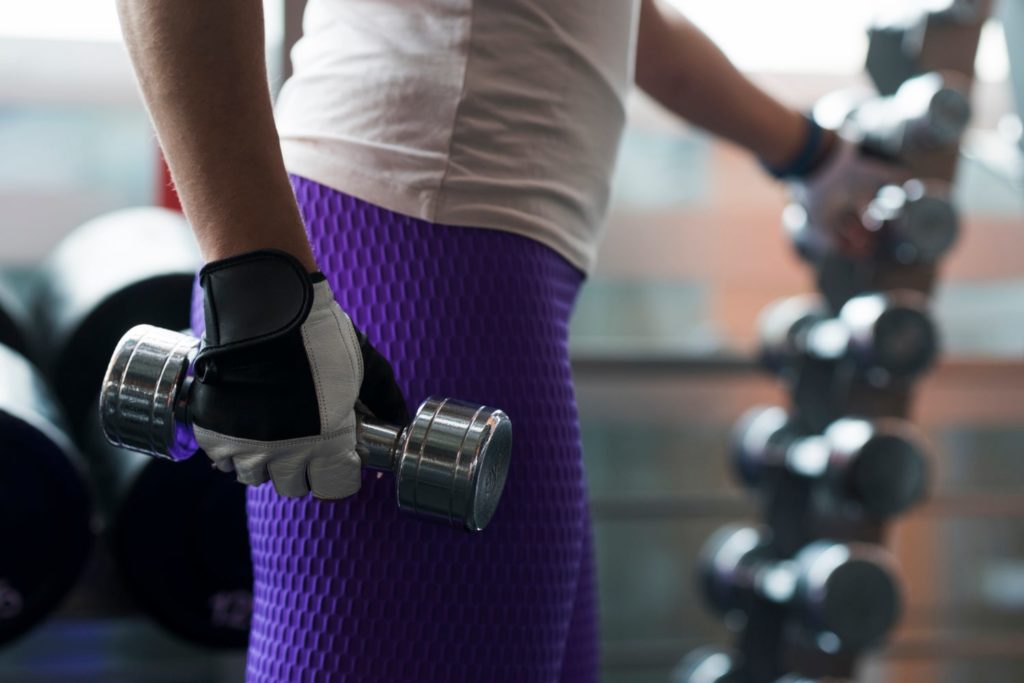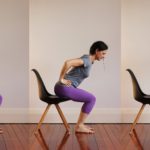
Kim Hoffmann
NASM CES (Corrective Exercise Specialist) and Certified Personal Trainer
There is often a misconception that cardio is the way to lose weight. Fat loss is an age-old goal for many people and yet many struggle with the infinite amount of information online, especially now with social media and “influencers”.
This is why this article will put you on the right path of how to lose weight, and gain muscle.
Weight Loss - How does it work?
There is a difference between weight loss and fat loss. Usually, when we are talking about weight loss, we are actually referring to fat loss. However, weight loss does not automatically mean that we’re losing fat.
We can also lose muscle. This is one of the reasons why weight training is so important.
There are two types of fat
Visceral fat surrounds our organs and protects them, while subcutaneous fat is the layer of fat just beneath our skin. When we talk about fat loss, we refer to the subcutaneous fat, which is unhealthy and can cause weight-related health problems.
Some might say that fat loss is all about calories in versus calories out. This is true for some, but for most, there is more to it.
An important thing to know about when losing weight is our metabolism. This is how many calories we burn and how fast, or slow, we burn them.
Part of our metabolism is the Total Daily Energy Expenditure (TDEE). It tells us how much energy we burn throughout the day, which consists of several parts.
BMR = Basal Metabolic Rate
This refers to the burning of calories while at absolute rest. Imagine lying on the couch and doing nothing. We are still burning calories in order to keep our organs functioning.
NEAT = Non-Exercise Activity Thermogenesis
This is movement outside of exercise. Think walking from the car to the office, or doing simple chores.
TEF = Thermogenesis of Food
TEF refers to burning calories while we eat. Ingesting, digesting, metabolising food and storing nutrients gained from food are all part of energy expenditure.
EAT = Exercise Activity Thermogenesis
This is the time we actually spend exercising.
As we can see, this is only a very small part of how we burn calories.

REE = Resting Energy Expenditure, NREE = Non-Resting Energy Expenditure, TDEE= Total Daily Energy Expenditure.
The reason why our metabolism should be high is simple. The higher our metabolism, the more calories we burn at rest (and during and after activities).
While our Resting Energy Expenditure, or Basic Metabolic Rate, burns the most amount of calories, this is not what helps us lose weight.
Knowing our Basic Metabolic Rate will tell us how many calories we should consume and by only focussing on restricting our caloric intake, we may actually slow down our metabolism so it’s more important that we increase our Non-Exercise and Exercise Activities Thermogenesis to boost our metabolism instead.
Other factors that will impact our metabolism and, indirectly, fat loss are
- Age
- Gender
- Stress levels
- Lean muscle mass
- Balance/production of certain hormones
- Sleep quality and quantity
RELATED — Great Sleep means Great Health: 17 Health Benefits of Good Sleep
As we age, our metabolism slows down. As we saw earlier, in the TDEE image, we need a fast(er) metabolism to burn the food we eat so it doesn’t get stored as fat.
This means that as we age, we need to keep up with exercise and strength training to keep our metabolism high. Another reason is that when we age we lose muscle. Muscles burn calories faster than fat, so building muscles is important to make sure we’re not putting on fat and lowering our metabolism.
Men tend to lose fat faster than women
This is mostly due to the fact that men have more muscles and less fat to begin with.
High stress levels or cortisol, our stress hormone, can negatively affect us in many ways. Stress has an impact on our eating behaviours, meaning we tend to eat more “comfort food” as well as have cravings.
It can also impact our sleep cycle, which is imperative for repair and recovery, mentally and physically. Lastly, it affects our self-regulation, which means we can become more impulsive and thus more likely to reach for that comfort food or skip a workout.[1]
Lean muscle mass (body weight minus our body fat) is important for our metabolism because the more muscle we have the higher our metabolism generally is. Muscles burn calories faster than fat. That’s why doing cardio alone for fat loss is not enough.
If we have an imbalance of certain hormones, we could struggle to lose weight. The thyroid, for example, is an important gland that’s part of our endocrine system that controls the speed of our metabolism.
It also affects our heart rate, breathing, digestion, body temperature and more.
Weight training
Weight training is any sort of training that uses weights in movement or where we exercise under load. Other terms are resistance training or strength training. We can use dumbbells, kettlebells, barbells and machines.
Weight training builds muscle size (hypertrophy) or strength. Both types of training use weights, but we would train differently in terms of repetitions and sets, though both would be beneficial for fat loss.
The goal in any type of weight training is to progressively overload the muscles in order to create neuromuscular adaptations.
If we do the same thing over and over again, we stop challenging the body and thus, stop building muscle.
As we’ve seen, building muscle is important for fat loss, so making sure that we regularly increase the weight, intensity and/or repetitions is a good way to keep building muscles.
Weight training for weight loss
There are many benefits to strength training, other than fat loss, and some of the most important ones include increased metabolism, stronger (i.e. denser) bones and joints, better mental health, increased strength and others.
Another reason why weight training is good for fat loss is because of the “afterburn”. The medical term is Excess Post-Exercise Oxygen Consumption, or EPOC. What this means is the amount of calories burned after we’ve stopped exercising. So far, research has shown that 3 types of training encourage “afterburn”:
- Weight training
- HIIT (High intensity interval training)
- Endurance training at higher intensities (70% of VO2Max or higher)
A study done by Paoli et al. showed a difference in EPOC 22 hours after exercising when subjects performed HIRT (High Intensity Resistance Training) versus traditional resistance training.[2]
The study was done with young, trained men and showed that after 22 hours post-exercise they burned an extra 23% of calories doing HIRT versus 5% doing traditional Resistance Training.
Other studies have reached the same conclusion after comparing the effects of resistance training and HIIT on EPOC in aerobically fit women.[3]
Lastly, weight lifting also improves our capabilities to process glucose and turn it into energy rather than store it as fat.
Weight training vs cardio
Cardio, both endurance and HIIT workouts, increases cortisol levels which is not a bad thing in itself. But too much of it, or too often, keeps the cortisol levels raised. Combine this with stress of everyday life and our cortisol doesn’t decline as it normally would. This can prevent us from losing fat.
Weight training does not increase cortisol as much which makes it an ideal activity to combine with cardio for fat loss, meaning we should alternate our cardio sessions and resistance training.
Frequency
Frequency is difficult to determine, because it depends on how much time we have during the week/weekend.
I would recommend doing resistance training at least 3 times per week but twice is good enough to elicit changes.
In contrast though, in a recent article in the Men’s Health magazine, they listed the amount of sets we should be doing for strength or muscle growth.[4]
What they found was that if we need to cut down on gym time, we should focus on the amount of sets we can do per muscle group per week.
For hypertrophy, it was a minimum of 5 sets per muscle group per week. For strength it was a maximum of 2 (working) sets per muscle group per week.
The frequency of our gym visits also depends on whether we do any cardio or sports. For example, I walk my dog once or twice a day for 30-45 minutes per walk. That is enough cardio for me. I aim to do strength training two or three times per week, depending on how much time I have.
Weight training exercises for fat loss
In resistance training, there are two types of exercises that we can do to build muscle, which are compound and isolation exercises.
Compound exercises
Compound exercises consist of using more than one joint/muscle group as we do the movement. This would mean squat, deadlift or a pull up.

Isolation exercises
Isolation means that we’re using one joint/muscle group, such as bicep curls or tricep extensions.
In order to lose fat, we need to be in a calorie deficit, but also burn those calories. The more we move, the easier/faster we’ll burn energy. Doing compound movements means that we’re using our body more efficiently and effectively to burn calories and, ultimately, fat.
Compound movements also build more lean muscle mass. As we’ve established earlier, muscles are more metabolically active than fat.
It’s more time-efficient to do compound exercises than if we do isolation movements.
Nonetheless, we should still be doing isolation exercises since that’s a really good way to fix any muscle imbalances. As a very sedentary society, it is very common for certain muscles, like the chest, to become very tight, whereas the opposing muscles in the back get weak.

Exercises
My favourite exercises include:
- Barbell deadlift (conventional or Romanian)
- Barbell squat
- Barbell overhead press
- Barbell bent over row
- Barbell or dumbbell bench press
- Barbell hip thrust
- Machine assisted / band assisted pull-ups
The reason for using the barbell is because you can easily increase the weight. Using dumbbells often increases risk of injury and is in some cases limiting for your goal, e.g. the goblet squat versus the barbell squat.
Using dumbbells often increases risk of injury
In this case, using a dumbbell will at some point be very difficult to lift up, whereas with a barbell, you can take it out of the rack quite easily.
On the other hand, a dumbbell bench press will allow for more stretch in your chest muscle (as long as your shoulder mobility allows) which will result in more growth.
Related Questions
1. As a woman, if I lift heavy weights, will I “bulk”?
No, for a woman it’s hard enough to put on muscle, so bulking is very difficult.
You would need to eat a lot in order to “bulk”.
2. I’m not seeing a difference on the scales. What am I doing wrong?
Muscles are denser than fat and so when you build muscle, you may weigh the same but you should see a difference in how your clothes fit or how you look (i.e. muscle tone).
This is one of the reasons I don’t like using scales/weight for measurement.
3. Is BMI a good way to measure my body size?
No, it’s not.
BMI takes our height and weight and determines a number based on that information. What it doesn’t take into account is muscle mass.
4. I always do the cardio/weights group classes at my local gym, but I’m not losing weight. Why not?
Cardio increases cortisol levels, which means too many cardio classes might actually prevent further fat loss.
Important to distinguish is that there is a difference between weight classes and a strength session because during weight class you are not building as much muscle as during a strength session.
Lastly, the duration of group classes is 45-60 minutes, while a true HIIT session (90-100% of your maximum heart rate) will last much less, since it is impossible to sustain that work rate for an extended period of time.
Kim Hoffmann is a certified Personal Trainer and Corrective Exercise Specialist based in Auckland. She also specialises in women’s health and fitness by taking into consideration the menstrual cycle and hormones and implementing them in different workout plans. The workout methods and routines include free weights, suspension straps and boxing, as well as strength training and high intensity…
If you would like to learn more about Kim, see Expert: Kim Hoffman.
References
(1) Kumar, Rupal; Rizvi, Moattar Raza1; Saraswat, Shubhra2. Obesity and Stress: A Contingent Paralysis. International Journal of Preventive Medicine 13(1):p 95, | DOI: 10.4103/ijpvm.IJPVM_427_20
(2) Paoli A, Moro T, Marcolin G, Neri M, Bianco A, Palma A, Grimaldi K. High-Intensity Interval Resistance Training (HIRT) influences resting energy expenditure and respiratory ratio in non-dieting individuals. J Transl Med. 2012 Nov 24;10:237. doi: 10.1186/1479-5876-10-237. PMID: 23176325; PMCID: PMC3551736. Retrieved from: https://pmc.ncbi.nlm.nih.gov/articles/PMC3551736/
(3) Greer BK, O’Brien J, Hornbuckle LM, Panton LB. EPOC Comparison Between Resistance Training and High-Intensity Interval Training in Aerobically Fit Women. Int J Exerc Sci. 2021 Aug 1;14(2):1027-1035. PMID: 34567357; PMCID: PMC8439678. Retrieved from: https://www.ncbi.nlm.nih.gov/pmc/articles/PMC8439678/
(4) Men’s Health. New Research Reveals the Minimum Amount of Sets per Week for Muscle Growth and for Strength. Retrieved from: https://www.menshealth.com/uk/building-muscle/train-smarter/a62552314/minimum-amount-of-sets-per-week-for-muscle-growth-strength/






